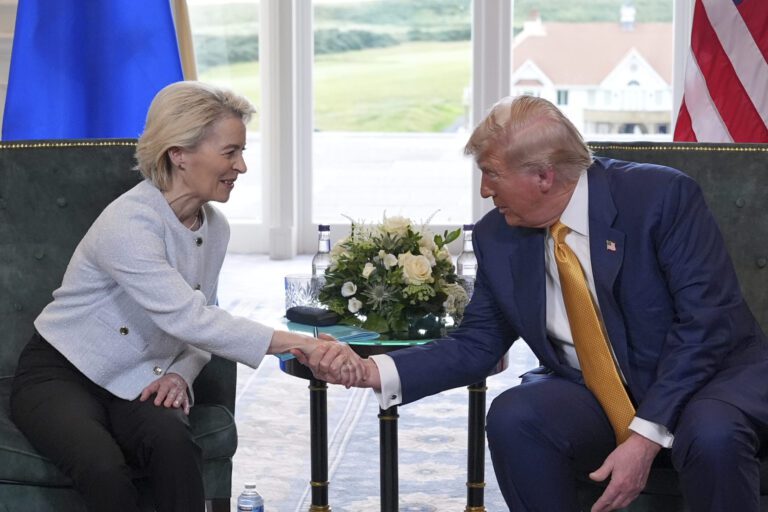US and EU Tariff Deal: A New Framework for Trade Relations
The United States and the European Union have reached a significant milestone in their trade relations with a new tariff framework, announced following a meeting between President Trump and European Commission President Ursula von der Leyen. This agreement comes just days before a crucial deadline for imposing tariffs on the EU, America’s top trading partner.
The Importance of the Agreement
President Trump characterized the negotiations as "very interesting," expressing optimism about the benefits for both parties. The stakes were undoubtedly high, as the talks were aimed at avoiding trade penalties that could have disrupted economies worldwide.
Key Highlights of the Meeting:
- Location: The private discussions took place at one of Trump’s golf courses in Scotland, highlighting the informal yet crucial nature of the talks.
- Agreement Type: Both leaders stated they reached an "across the board" agreement, symbolizing a comprehensive approach to tariff negotiations.
- Fairness in Trade: President Trump emphasized the need for a more balanced transaction, criticizing the current trade situation as "very one-sided."
The Context of Trade Negotiations
The United States and the EU hold the title of the world’s largest trading bloc, involving hundreds of millions of consumers and trillions in trade volume. Ms. von der Leyen noted that the outcome of these negotiations could lead to one of the most significant deals ever struck between the two entities.
Sticking Points:
- Tariff Rates: Trump has previously threatened large tariffs to rectify trade deficits with several countries. He indicated that the EU might need to adhere to a tariff rate similar to a recent agreement with Japan, which is set at 15%.
- Trade Retaliation: The EU has warned that failure to find common ground could result in retaliatory tariffs on various American products, such as beef, auto parts, and even iconic brands like Boeing.
Political Ramifications
The urgency of the negotiations was underscored by the tightening deadline, with U.S. Commerce Secretary Howard Lutnick stating, “No extensions, no more grace periods. August 1, the tariffs are set.”
- Demonstrators: The meeting at Turnberry was accompanied by a small group of demonstrators who voiced their opinions on Britain’s Prime Minister, Keir Starmer. However, Trump received supportive cheers from others present.
Upcoming Schedule:
Following the golf meetings in Scotland, Trump is set to attend the ribbon-cutting ceremony for a new golf course his family is opening in Aberdeen next month.
What Lies Ahead for US-EU Trade Relations?
Without a successful agreement, the economic consequences could be debilitating both for the EU and the United States. Punitive tariffs could drastically increase prices on European goods ranging from:
- French cheese
- Italian leather
- German electronics
- Spanish pharmaceuticals
The geopolitical landscape continues to shift as both the U.S. and the EU navigate these complex trade waters. The question remains: can both sides strike a deal that preserves their mutual economic interests? The outcome of these negotiations may define future engagements and partnerships.
A Broader Context
In the wake of these discussions, it’s vital to consider the broader implications of U.S.-EU relations within the global trade framework. The United States also announced a trade framework with the UK in May, along with a more expansive agreement during the recent G7 summit in Canada.
For further reading on tariff impacts and international trade agreements, explore these external resources:
In summary, as both the U.S. and the EU take steps toward a revised tariff framework, the outcome remains pivotal for their economic futures. The negotiations reflect not only a recalibration of trade terms but also a potential realignment of global economic dynamics.


